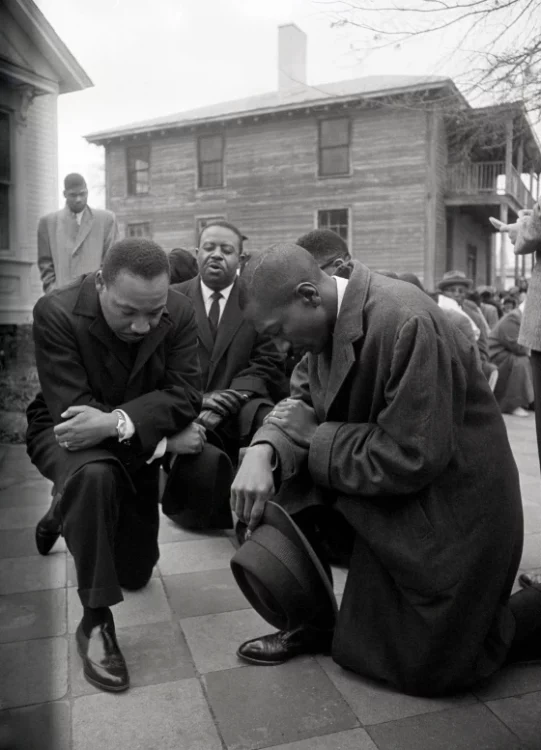One civil rights icon has been overlooked in history books. His family is trying to change that.
Share
Explore Our Galleries
Breaking News!
Today's news and culture by Black and other reporters in the Black and mainstream media.
Ways to Support ABHM?
By Claretta Bellamy, NBC News

Alan Reese’s passion for protecting his grandfather’s place in history started when he was a fifth grader. Reese came across a picture of the Rev. Frederick Douglas Reese standing next to the Rev. Martin Luther King Jr. in one of his history books. The only problem was that none of his classmates believed the man standing next to one of the most formidable figures in American history was his grandfather.
Little did the other students at Cedar Grove Elementary School in Ellenwood, Georgia, know that Reese’s grandfather, as an activist and a member of the clergy, was a key figure in the fight for civil rights, and had urged King to come to his hometown, Selma, Alabama, to march for the voting rights of Black people in 1965.
That’s why Alan said he needed to set the record straight. After he told his grandfather what had happened at school, Frederick Reese called Alan’s teacher to confirm the story, which turned into a surprise classroom visit.
“He walked in, and they went bananas, because his face was still the same,” recalled Alan Reese, now 37 and living in Atlanta. That moment, he said, “put a burn in me at a young age.”
Decades later, Alan Reese and his brother, Marvin are working to keep their grandfather’s name alive by organizing tours all over Selma, detailing who their grandfather was, his significance to the area and how his work helped create change for Black people in Selma and elsewhere in the country.
Learn about the Reese brothers’ efforts.
Our exhibits about the civil rights movement similarly tell unknown stories.









Comments Are Welcome
Note: We moderate submissions in order to create a space for meaningful dialogue, a space where museum visitors – adults and youth –– can exchange informed, thoughtful, and relevant comments that add value to our exhibits.
Racial slurs, personal attacks, obscenity, profanity, and SHOUTING do not meet the above standard. Such comments are posted in the exhibit Hateful Speech. Commercial promotions, impersonations, and incoherent comments likewise fail to meet our goals, so will not be posted. Submissions longer than 120 words will be shortened.
See our full Comments Policy here.